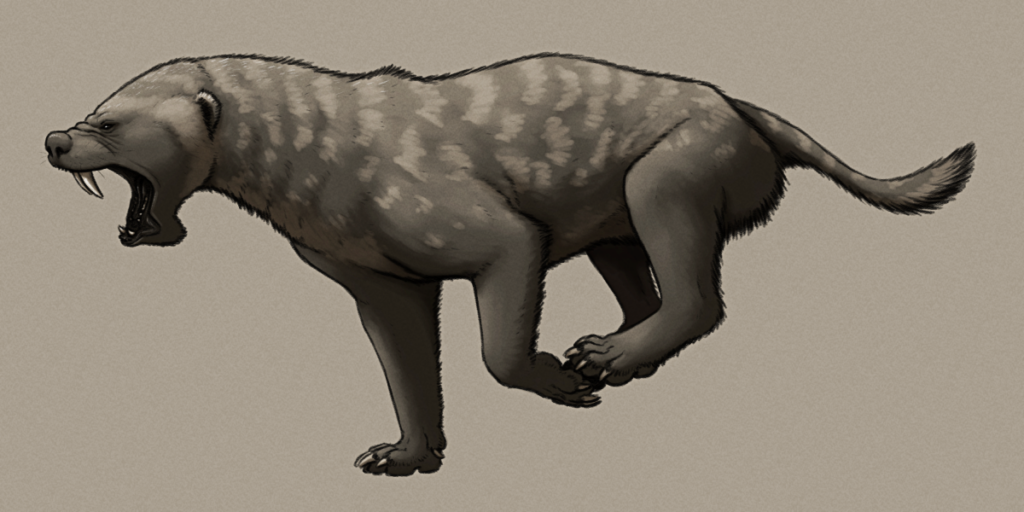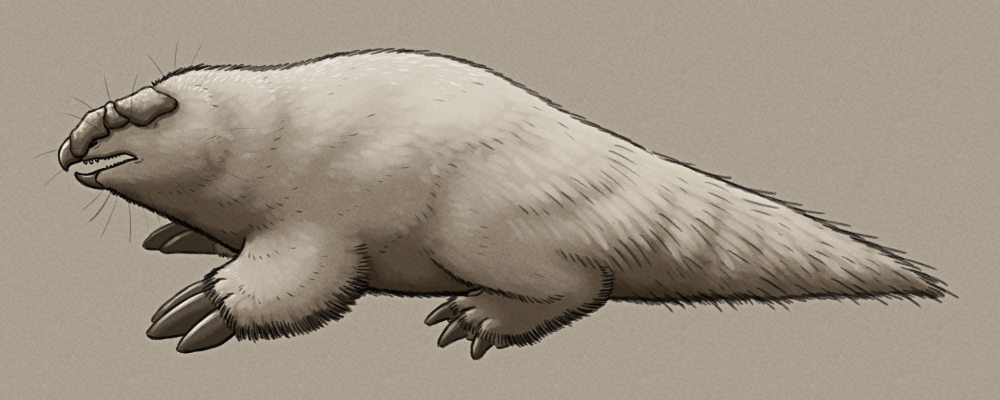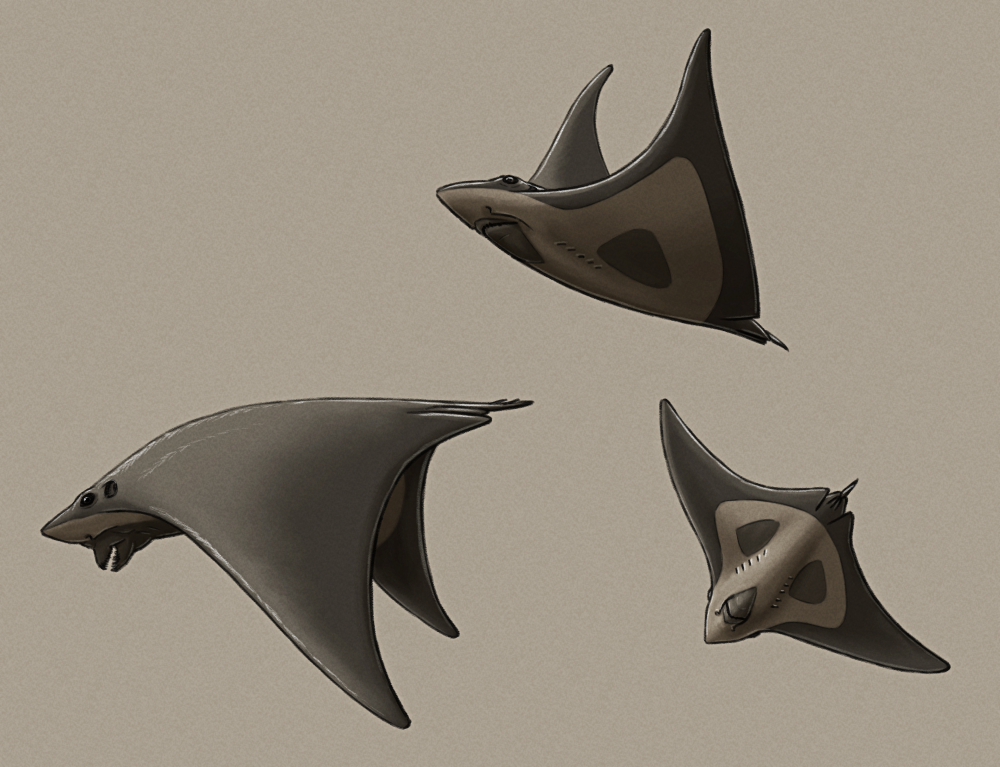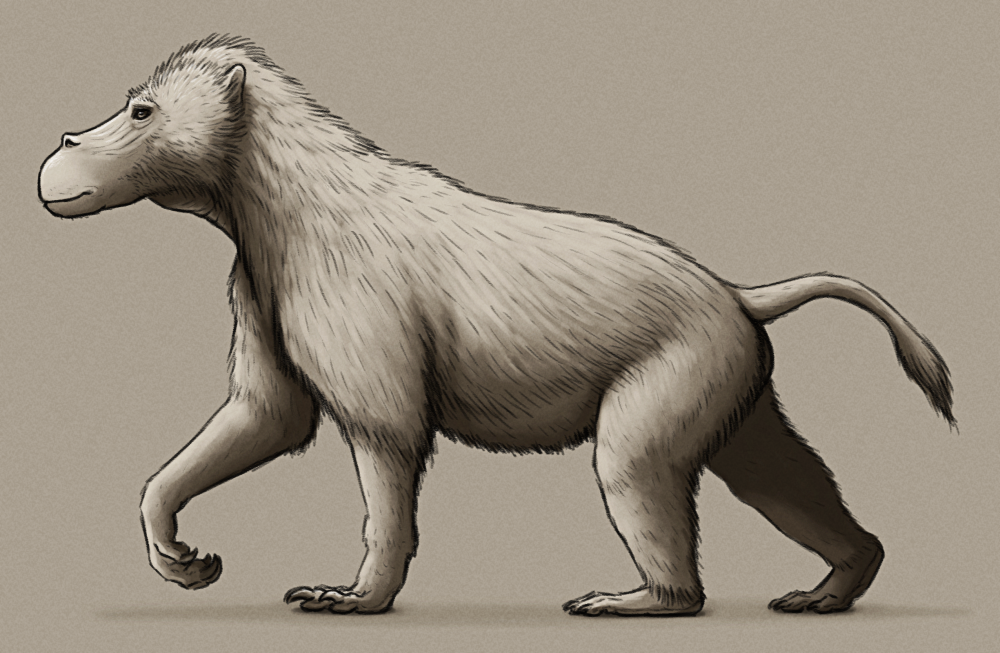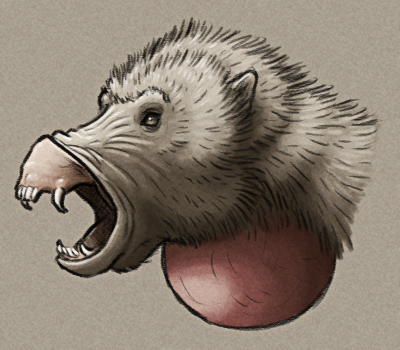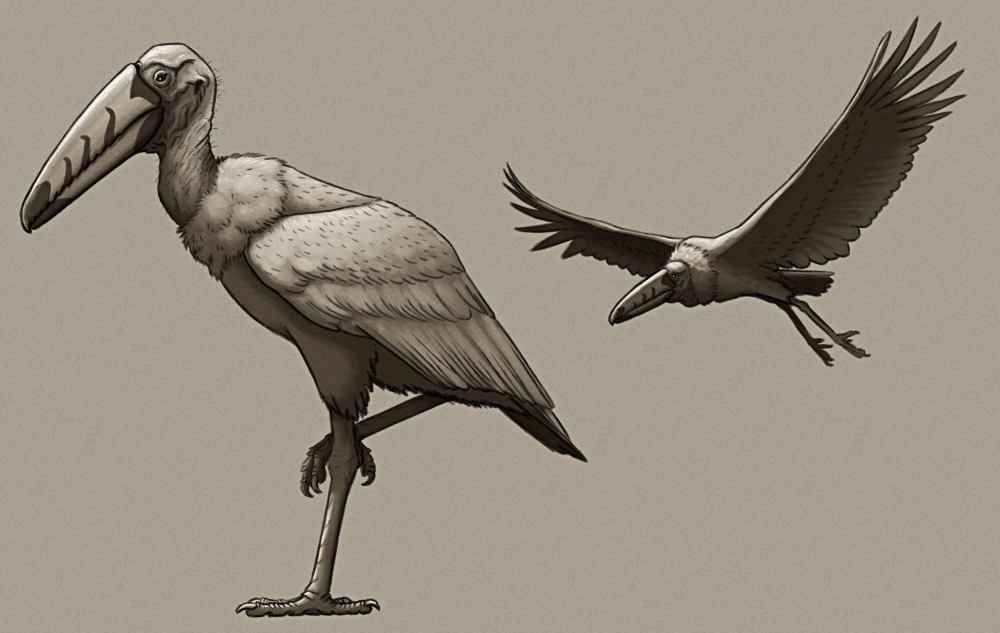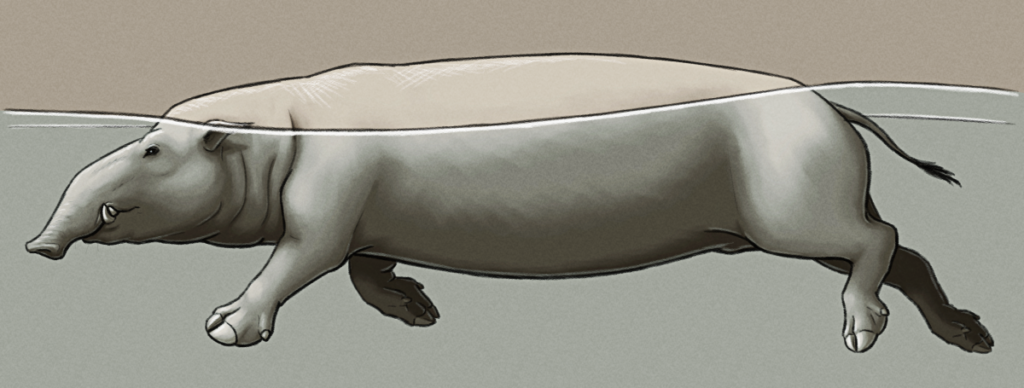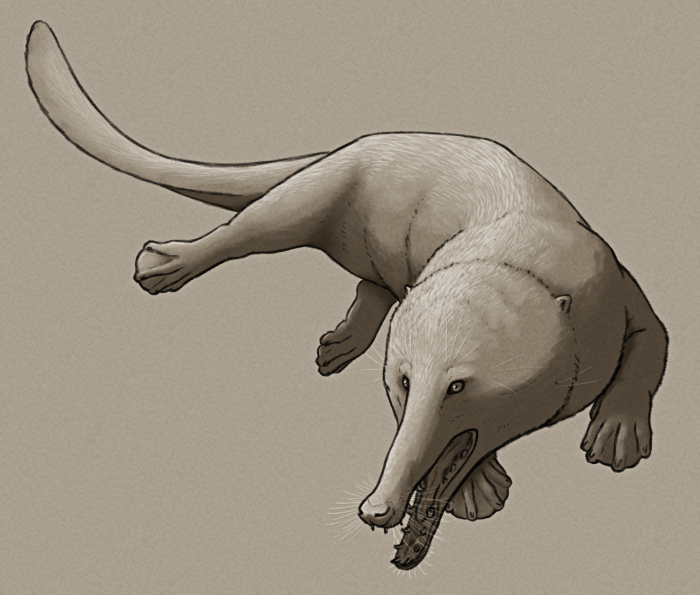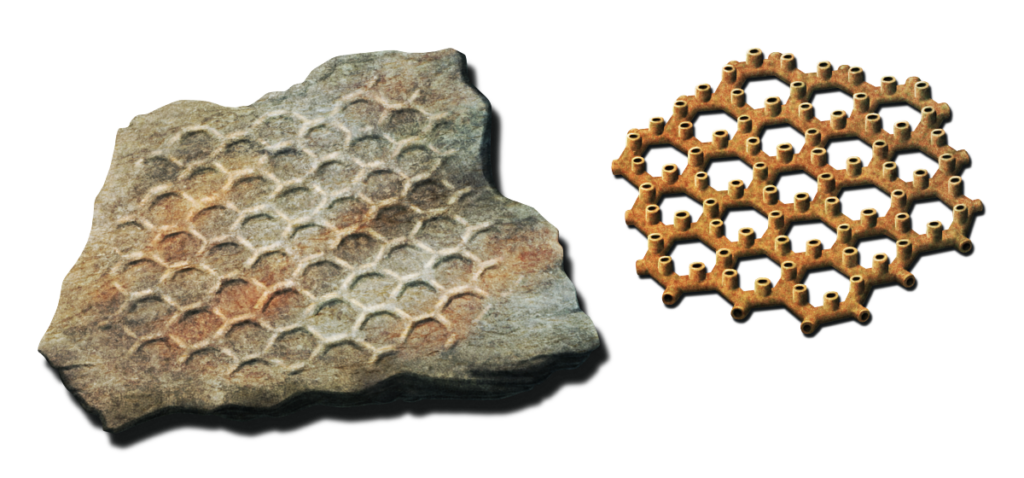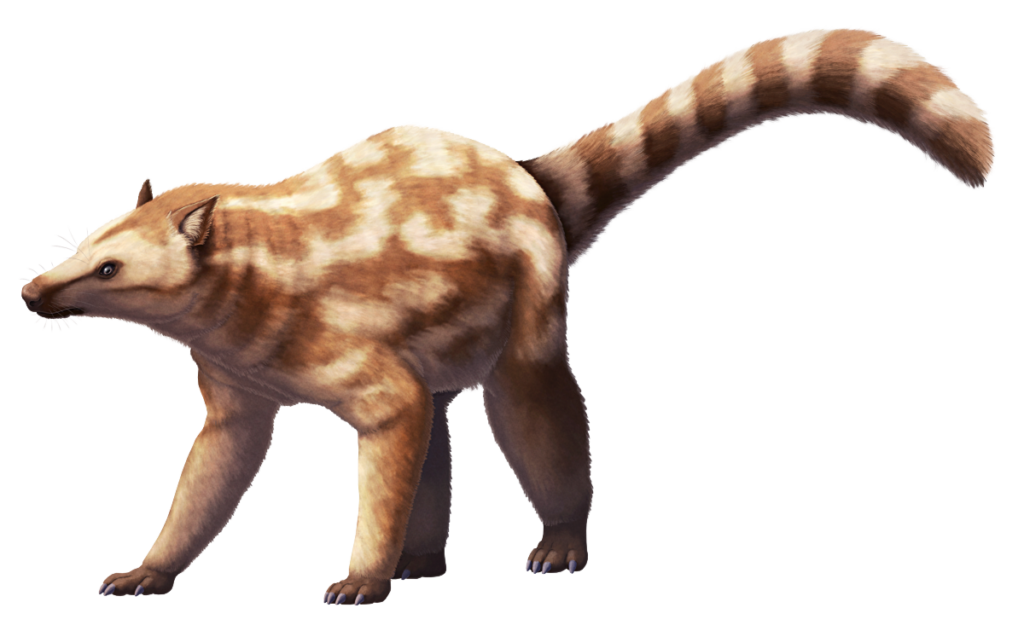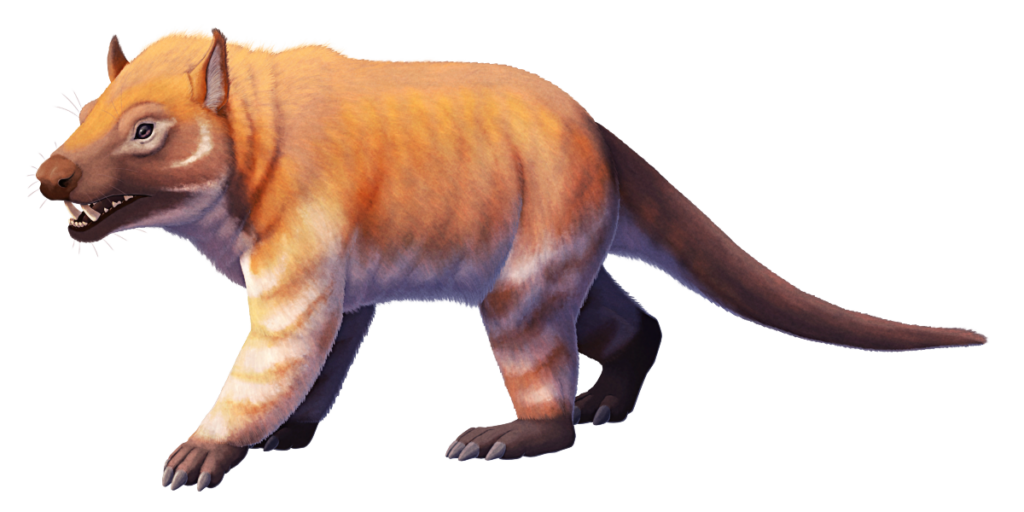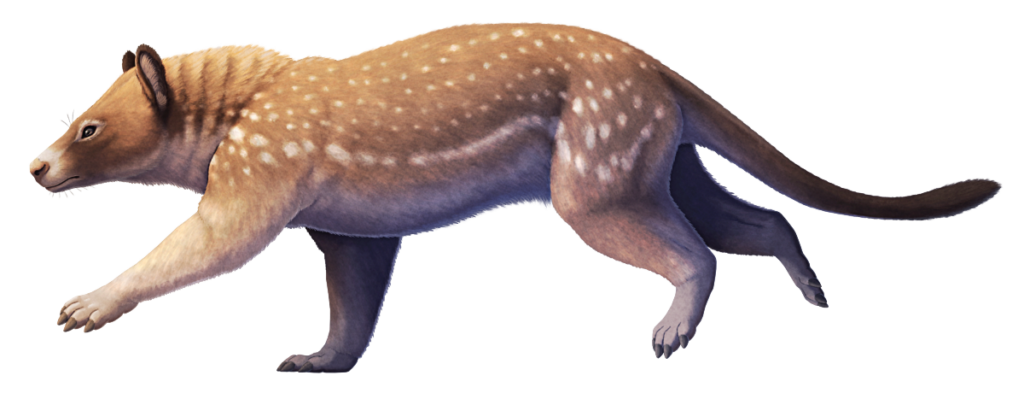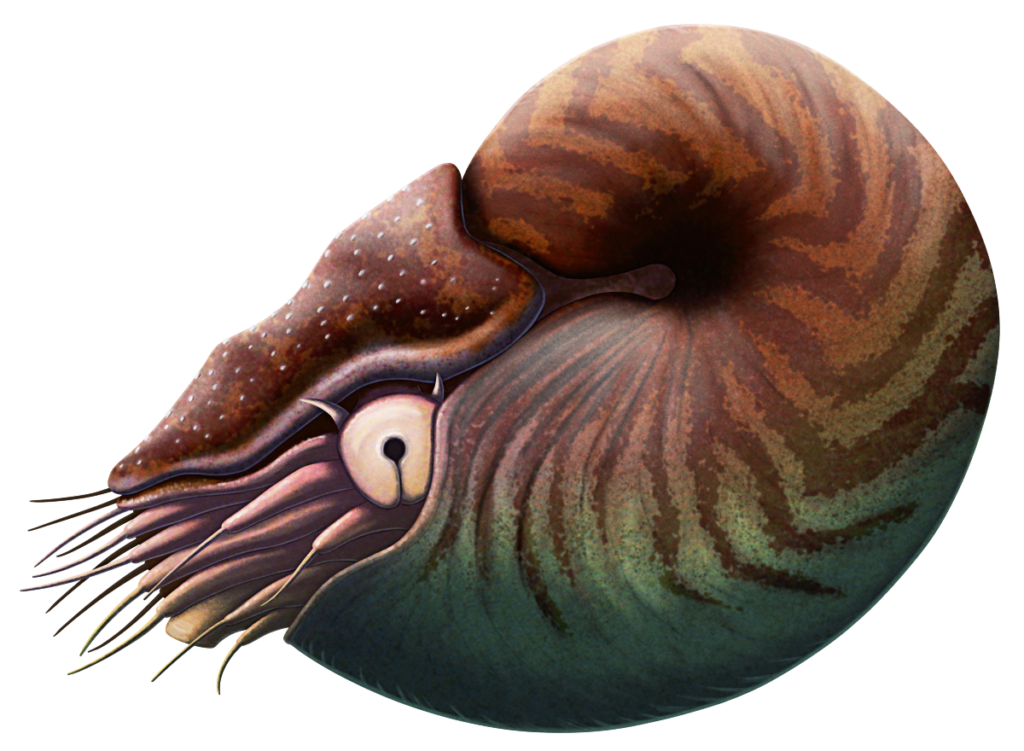@poshtearexdoodles asked for “African wild dogs evolved to fill the larger pack animal niche of lions”:
Although in this particular timeline the endangered and fragmented wild painted dogs in Africa didn’t survive far past modern times, that wasn’t the final extinction of the species – captive groups persisted, and after the [REDACTED] of humans an escaped population managed to carve out a niche for themselves in the grasslands of southern North America.
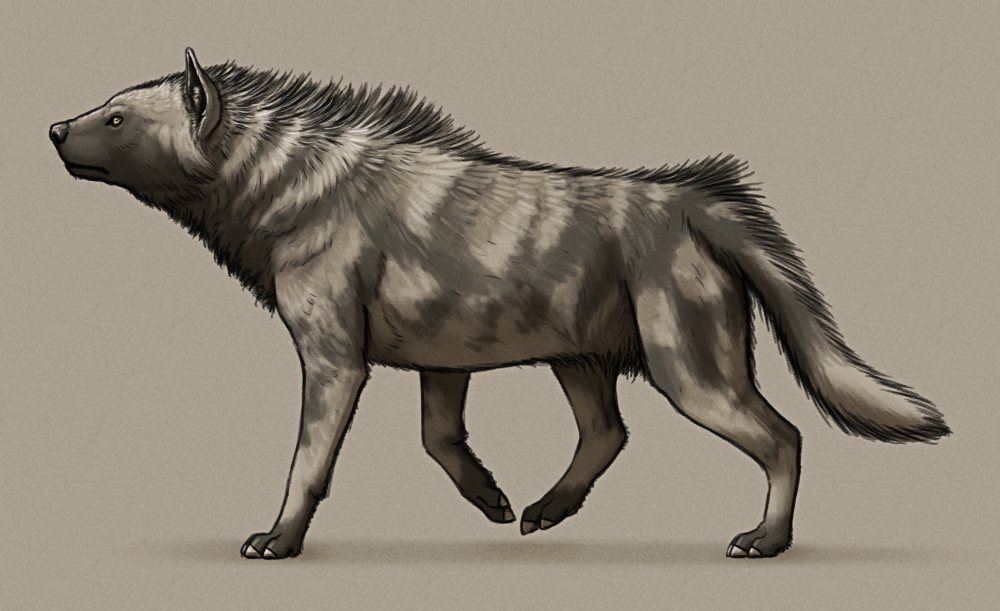
Their most notable descendant is Megainolycos poshtearexi. At nearly 1m tall at the shoulder (~3’3″) it’s one of the largest canids to ever exist, comparable to present-day lions in size and general ecology, with short thick bone-crushing jaws convergent with those of hyenas.
It also retains the complex variable coat coloration of its ancestors, with each individual having a unique disruptive pattern of black, white, and brown blotches.
Much like its ancestors it’s a highly social pack predator specialized for endurance hunting. Along with some surprisingly horse-like limb ligament morphology, its feet now sport hoof-like nails rather than claws, and it pursues prey over long distances to the point of exhaustion – mainly targeting the larger ungulates across its prairie habitat such as hogs, horses, bovids, and deer.

